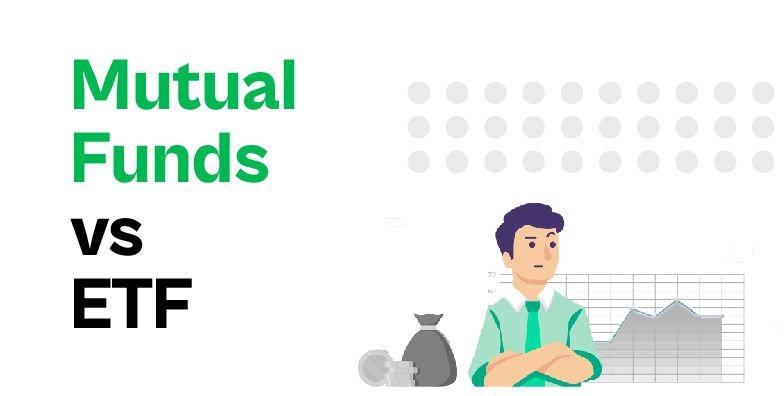Silver ETFs – Is it on bull run?
A. Historical returns (over 2 years April 23 – April 25)
– Gold returns – 64%
– Silver returns – 38%
– Nifty returns – 35%
Silver has beaten Nifty returns by a slight margin
In the works: the promise and pitfalls of sachet SIPS
How ₹250 monthly MF SIPS could empower low-income earners despite existing barriers In January 2025, the market regulator introduced the concept of ₹250-amonth mutual fund investments – akin to selling shampoo in sachets instead of bottles – in a bid to bring India’s low-income earners into the financial mainstream. While smaller ticket size addresses affordability, there are barriers that make gold jewellery and informal chit funds more attractive propositions for this category of savers. But, this means low-income earners are left with low-growth savings or end up watching their lifetime savings disappear after investing them in fraudulent schemes. Mint talked to those who tried to get their house helps to invest in mutual funds. The problem starts from trying to convince them to opt for an MF instead of buying a gold necklace. However, once they’re in, there are structural hurdles to cross–and not all find it easy to complete the process. Trust and persuasion It’s not easy to convince low-income earners who typically buy jewellery for savings to invest in a financial product such as a mutual fund. Many times, they are apprehensive and unable to grasp the concept. For Ratnama, a house help, it all started when she told her employer Samit Singh’s wife that they planned to set aside some money for their child. When Singh got to know this, he urged Ratnama to put part of it in equity mutual funds to get higher returns than fixed deposits. Singh told Mint that he spoke to Ratnama’s husband, an electrician, about how MFS work, investing categories, and the concept of net asset value, but the husband didn’t understand. “Although I explained everything in Hindi, he zoned out. Later, he told me he hadn’t understood much but still wanted to invest in MFS as they trusted me.” After two months, Ratnama told Singh that some FDs were maturing and she wanted to invest ₹60,000 in mutual funds for her child. Singh decided to help them out. Pan-Aadhaar link However, the very first step towards opening a MF account turned out to be tough. Ratnama’s permanent account number (PAN) was not linked to her Aadhaar, which is needed for buying or selling of MFS. Singh found out that nobody from Ratnama’s community knew about linking PAN and Aadhaar. There was now a ₹1,000 penalty to link PAN and Aadhaar as the deadline was over in June 2023. For people like Ratnama who earn ₹12,000-13,000 per month, this was a significant amount. Singh paid the fine, not wanting to discourage the couple, but the next step also turned out to be a speed breaker. Bank documents A bank cheque with account holder’s name written on it was needed for KYC registration. Ratnama’s old cheque did not have her name on it. The other document was a bank passbook, which was also something she didn’t have. That’s when she approached the bank and got the application written with the help of Singh. That took 5-6 days. Then, Singh found out that Ratnama did not have an email ID so he helped her create one and finally invested in a mutual fund after one and a half months. “She wanted to go aggressive. When I told her that high risks can give high returns, like every first-time investor, she was super excited and wanted 100% in high-risk funds. But knowing that such people may need money sooner than planned due to emergencies, I split it as follows – ₹30K in a flexicap fund, ₹20K in a balanced advantage fund, and ₹10K in an arbitrage fund.” For many, the bottleneck starts right at the beginning. When Rachna Monga Koppikar tried to start a ₹500 SIP for her cook, she found out that her PAN and Aadhaar weren’t linked. When she tried to link by paying the fine, she found that the PAN and Aadhaar names did not match. “Her middle name was Bhagwan in Aadhaar and Bhagvan in PAN card,” said Koppikar. “She needs to go to a Aadhaar centre to get it changed herself.” SIPS and direct plans Gangadhar, a techie, wanted to add a corporate touch to salaries paid to his cook and house help. He and his wife convinced them that their yearly increment would come in the form of an SIP, not as cash in hand. The duo agreed to the prospects of growing their money and having something set aside for retirement. The techie wanted to ensure they did not end up spending their salary before the money was debited for the SIP. For this, he opened a zero-balance account for the cook, while the cleaner insisted on using her existing account. When he opened the zero-balance account, his cook took a hit of ₹600 for debit card fee. After multiple back-and forth exchanges with customer care using email, that money was refunded. “We didn’t want her to be hit with unexpected fees, and that’s why we had opened a zero-balance account,” said Gangadhar. “I had to send X (formerly Twitter) DMS and emails to get the debit card fee reversed. This would be impossible for our cook (Gouramma) if she was doing it on her own.” He opened an account for the cleaning maid using Phonepe. “The process was smooth, but she approached me after a few days, saying her name was spelled incorrectly.” Besides, his house help bought units of regular plan, which had inbuilt commissions, rather than units of direct plans. He approached a friend and found out about apps offering direct MFS. But, when he tried opening the account, one app informed that she had two bank accounts with the same bank. When email exchanges didn’t lead to a solution, he tried setting up another app, and soon it was up and running. When he tried to register for an SIP, he found he needed to submit a mandate using net banking or a debit card if the investor wants the MF operator to deduct amount to invest automatically in the scheme at
In the works: the promise and pitfalls of sachet SIPS (Summary)
How ₹250 monthly Mutual Fund SIPS could empower low-income earners despite existing barriers In January 2025, the market regulator introduced the concept of ₹250-amonth mutual fund investments – akin to selling shampoo in sachets instead of bottles – in a bid to bring India’s low-income earners into the financial mainstream. While smaller ticket size addresses affordability, there are barriers that make gold jewellery and informal chit funds more attractive propositions for this category of savers. Most fund houses have SIPs that mandate a minimum investment of at least Rs 1,000 a month. Some fund houses allow Rs 500 SIPs, only a handful of fund houses allow investors to invest with as little as Rs 100 a month. It is financial unviable to run such micro-sized SIPs at a large scale. But technology, would bring this cost down in future. The idea really is bring down the cost, so that the bottom of the pyramid (investors with lower income, or lower disposable income left to invest) can come into mutual funds. This, would lead to a tremendous growth of the Indian mutual fund industry. The problem starts from trying to convince them to opt for an MF instead of buying a gold necklace. Convincing low income earner to invest in mutual fund over traditional assets requires financial education and trust building. However, once they’re in, there are structural hurdles to cross–and not all find it easy to complete the process. What makes investing hard for low income earners KYC and documentation issues : PAN – Aadhaar linking delays, name mismatches, add missing documents like passbook or cancel cheque stall onboarding. Limited digital access and know how : Many don’t have email IDs struggle with mobile apps and aren’t comfortable using digital platform beyond UPI Language and form filling hurdles: Forms and interface in English deter many , even basic input steps free overwhelming without help Fear of fraud and scams: Past phishing attempts and lack of trust in unknown apps or calls create hesitation around digital finance No dedicated support for small investor: Mutual fund distributor have little incentive to serve those investing Rs. 500 – Rs.1000 monthly leaving them with few guidance options. What can be done? There is little incentive for MF distributors to service clients who invest ₹250-500 a month. The average commission that an MF pays to a distributor is 0.5 to 1%. An investment of ₹6,000 a year would fetch a commission of ₹42. The 1,400-odd registered investment advisors cater to white-collared workers or high net worth individuals to make business sense. Account-opening could be streamlined and apps should allow prospective investors to create a UPI account that can be given to their employers. Another helpful step would be to conduct investor awareness sessions in local languages that low-income earners can understand in their own way. I have started with my household helpers, security guard to create awareness in this direction and would we happy to start by convincing at least few of them to invest in this financial product, benefiting both the low income earners as well as the industry.
ETF vs MUTUAL FUNDS
ETF v/s Mutual Fund What are ETFs? Exchange-traded funds represent a type of mutual fund that typically mirrors an index or sector and is traded on a stock exchange, similar to individual stocks. While functioning similarly to regular mutual funds, ETFs require investors to have a demat account for transactions due to their stock market trading nature. In essence, ETFs track indexes like the CNX Nifty or BSE Sensex. When purchasing shares/units of an ETF, investors are essentially acquiring shares/units of a portfolio mirroring the performance of its underlying index. Unlike other index funds, ETFs aim to replicate rather than outperform their respective indexes, essentially mirroring the market rather than attempting to beat it. In contrast to traditional mutual funds, ETFs trade like common stocks on stock exchanges, with their traded price fluctuating throughout the trading day. This price is influenced by the net asset value of the underlying stocks within the ETF. ETFs typically offer higher daily liquidity and lower fees compared to mutual funds, making them an appealing option for individual investors. One simple example of an ETF is the Nifty 50 ETF, which tracks the Nifty 50 index. When investors buy shares of this ETF, they are essentially buying a portion of the Nifty 50 index. As the Nifty 50 index represents the performance of the top 50 companies listed on the National Stock Exchange of India, investing in the Nifty 50 ETF provides investors with exposure to the overall performance of these companies. The following are the other popular ETFs: Sensex ETF: Similar to the Nifty 50 ETF, this fund aims to replicate the performance of the Sensex, which represents the 30 largest and most actively traded stocks on the Bombay Stock Exchange (BSE). Gold ETFs: Several ETFs in India track the price of gold, allowing investors to invest in gold without the need for physical storage. Examples include HDFC Gold ETF, SBI Gold ETF, and Axis Gold ETF. Banking ETFs: These ETFs invest in stocks of banks and financial institutions listed on Indian stock exchanges. Examples include Nippon India ETF Bank, BeES, and SBI ETF Banking. Sectoral ETFs: ETFs focused on specific sectors of the Indian economy, such as technology, energy, or infrastructure, provide investors with targeted exposure to these industries. Examples include the ICICI Prudential Bharat 22 ETF and Reliance ETF PSU Bank BeES. Benefits of investing in ETFs Diversification: Similar to traditional mutual funds, ETFs consist of a basket of securities that provide investors exposure to a variety of assets, such as indices or sectors like Nifty, IT, banking, and more. However, it’s important to note that ETFs tracking gold may not offer the same level of diversification. Real-time trading: Unlike mutual funds, ETFs trade in real-time on stock exchanges, allowing investors to buy or sell shares whenever they choose. In contrast, mutual fund transactions follow a T+2 settlement cycle, requiring two days for settlement. Focused sector or index investment: ETFs typically track specific sectors, indices, or commodities like gold, providing investors with targeted exposure to those areas through a single, tradable fund. Cost-effectiveness: Since ETFs aim to track an index rather than outperform it, they incur lower administrative costs compared to actively managed portfolios. The administrative costs of ETFs are typically less than 0.20% per annum, significantly lower than the over 1% yearly cost of some actively managed mutual fund schemes. With lower expense ratios, ETFs entail fewer recurring costs that could diminish returns. FAQs What happens to the dividends received by the underlying stocks? Dividends received by an ETF are usually reinvested back into the fund. Are ETFs limited to stocks only? No, ETFs cover a wide range of asset classes beyond stocks. Any asset class with a published index and sufficient liquidity for daily trading can be structured into an ETF. This includes bonds, real estate, commodities, currencies, and multi-asset funds. For instance, in India, mutual funds offer gold ETFs, where the underlying investment is in physical gold. How do gold ETFs work? Gold ETFs represent physical gold bars with a purity of 99.5%. Their prices are listed on the websites of stock exchanges like BSE/NSE and can be traded through a stockbroker at any time. Unlike physical gold jewellery, gold ETFs can be bought and sold at the same price nationwide. Who should consider investing in gold ETFs? Gold ETFs are suitable for investors interested in gold investments but who prefer to avoid the hassles of storing physical gold or have concerns about gold purity. Additionally, investors seeking tax benefits may find gold ETFs attractive. Since there are no premiums or making charges, investors can save money, especially with substantial investments. Moreover, investors can start with purchases as low as one unit (equivalent to 1 gram). How do ETFs maintain liquidity? ETFs maintain liquidity primarily through trading in the secondary market and secondarily through the creation/redemption process with the fund’s creation unit size. The liquidity of an ETF is essentially derived from the liquidity of the underlying shares, facilitated by the unique in-kind creation/redemption process.







